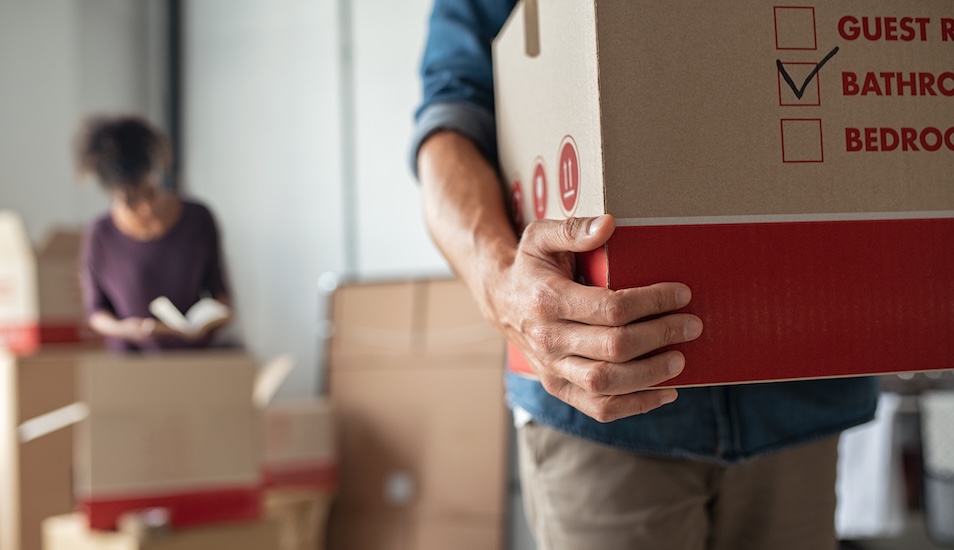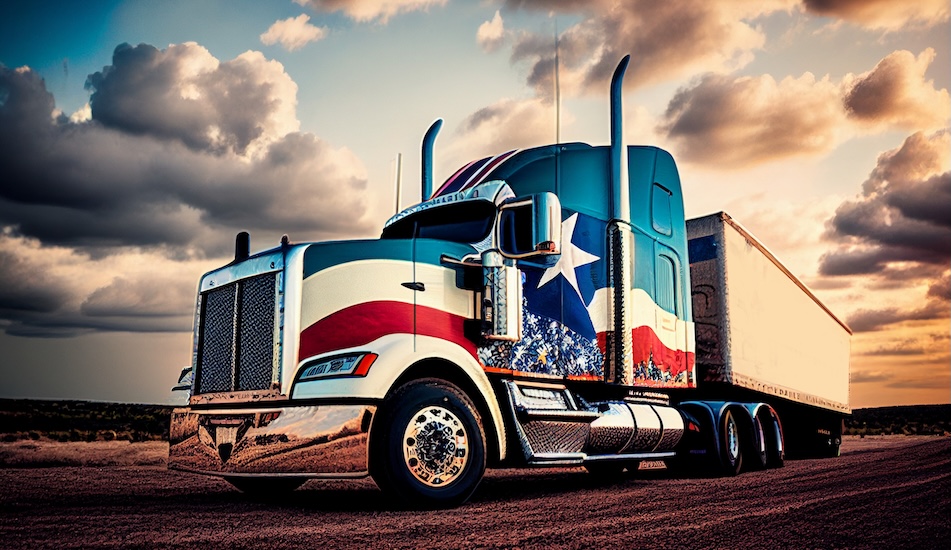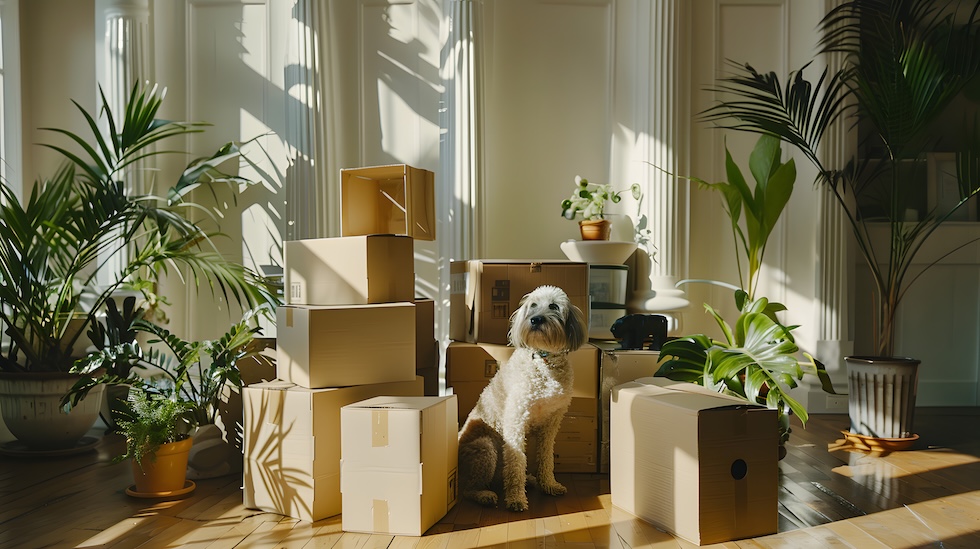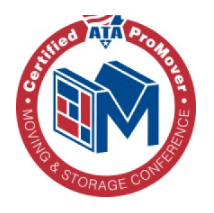Where to Find Moving Boxes: 15 Free & Low-Cost Sources

The quest for quality moving boxes shouldn’t drain your wallet or add stress to your relocation journey. Smart movers know that securing the right boxes often costs nothing but a bit of planning and insider knowledge. From major retailers’ recycling rooms to community apps connecting neighbors, countless free and low-cost options await.
Timing makes all the difference when sourcing boxes from retail giants like Walmart and Target. These stores typically break down their shipments early morning or late evening, offering pristine boxes perfect for protecting your belongings.
Digital platforms have revolutionized box hunting too – U-Haul’s Box Exchange and local buy-nothing groups connect you directly with free moving supplies in your area.
Professional movers understand that successful relocations start with proper planning and quality materials. Our decades of experience have revealed the most reliable sources and strategic collection methods that keep moves smooth and budgets intact.
From calculating exact box quantities for your home size to implementing proven collection schedules, we’ve refined these techniques through thousands of successful moves.
Beyond traditional cardboard, today’s movers can explore eco-friendly alternatives and specialized moving kits designed for specific items.
Each option comes with its own advantages, whether you’re planning a local move or coordinating a cross-country relocation. Let’s explore the extensive range of moving box solutions that combine practicality with cost-effectiveness, ensuring you’re fully equipped for moving day without unnecessary expense.
Smart Planning For Moving Box Collectio
Let’s tackle one of the most fundamental parts of any successful move – gathering the right boxes. After helping thousands of families relocate, we’ve learned that strategic box collection makes all the difference between a smooth move and a last-minute scramble.
Required Box Quantities By Home Size
Here’s a practical breakdown of what you’ll need:
- Studio apartment: 20-30 boxes
- 1-bedroom home: 30-40 boxes
- 2-bedroom home: 40-60 boxes
- 3-bedroom home: 70-100 boxes
Pro tip: Start with 10-15 boxes per room, then add 25% extra for those inevitable last-minute items. Kitchens typically need more small and medium boxes for dishes and appliances, while bedrooms require larger boxes for bulky items like comforters and clothing.
For support during this process, consider reaching out to professional home movers, like Nelson Westerberg, who can guide you in planning and executing a seamless relocation.
Essential Box Types And Their Uses
Think of boxes like tools – each type has its perfect purpose:
Small boxes (1.5 cubic feet):
- Books and heavy items
- Canned goods
- Tools and hardware
Medium boxes (3 cubic feet):
- Kitchen items
- Decorative pieces
- Small appliances
Large boxes (4.5 cubic feet):
- Pillows and blankets
- Lightweight, bulky items
- Lampshades
Specialty boxes serve specific needs – wardrobe boxes keep clothes wrinkle-free, while dish pack boxes offer extra protection for your valuable china and glassware.
Best Times To Source Moving Boxes
Timing can make all the difference in your box-hunting success. Most retail stores receive shipments between 4 AM and 8 AM or after 9 PM. Early weekday mornings often yield the freshest selection of boxes, right after stores complete their restocking.
Looking for premium-quality boxes? Try liquor stores around major holidays – they typically have sturdy boxes with built-in dividers perfect for protecting fragile items.
Box Quality Assessment Criteria
A quick 30-second quality check can save hours of frustration later. Here’s what to look for:
- Corners and edges: Must be intact, no crushing
- Bottom seams: Strong and properly sealed
- Surface condition: Free from water damage or stains
- Structural integrity: Box should hold shape when gently pressed
- Cleanliness: Avoid boxes with food residue or strong odors
Skip any boxes that previously held food – they might attract unwanted pests during storage or transport. A simple test: if a box feels soft or sags when lifted, leave it behind.
Smart box collection sets the foundation for a successful move. Taking the time now to gather the right materials will make packing smoother and help protect your belongings during transit.
Free Moving Box Sources
Moving boxes don’t have to drain your wallet – you just need to know where to look and when to ask. Here’s our insider guide to scoring quality boxes for free, based on years of professional moving experience.
Retail Establishments
Large Box Retailers
Walmart, Target, and Costco receive massive shipments almost daily, making them goldmines for free boxes. Pro tip: Visit between 7-8 AM after overnight stocking or 8-9 PM following daily deliveries.
Best Buy’s electronics boxes come with extra padding and reinforced corners – perfect for delicate items. Costco’s produce and bulk item boxes are particularly sturdy, easily handling up to 65 pounds of contents.
Specialty Stores
Liquor stores are your secret weapon for premium packing boxes. Their sturdy containers come with built-in dividers – ideal for glasses, vases, and other breakables.
Barnes & Noble receives weekly shipments in heavy-duty boxes designed for 40+ pounds of books. Looking for document storage? Staples and Office Depot boxes feature reliable lids and clean, uniform sizes perfect for filing systems.
Local Small Businesses
Your neighborhood coffee shop, pharmacy, and bar could be sitting on a treasure trove of boxes. Most receive deliveries on set schedules – just ask when their shipments arrive. Craft stores like Hobby Lobby and Michaels offer an impressive variety, from tiny jewelry boxes to large storage containers that work great for lightweight decor items.
Digital Platforms
Community Apps
U-Haul’s Customer Connect puts you directly in touch with recent movers looking to pass along their boxes. The Craigslist “free” section updates hourly in most cities, while NextDoor’s “Classifieds” section lets you filter by distance – making quick pickup a breeze.
Social Media Marketplaces
Facebook Marketplace has transformed into a hub for free moving supplies. Most boxes posted here are barely used, since people typically list them within 48 hours of unpacking. Sort by “newest first” and set up alerts for “free moving boxes” in your area.
Local Buy-Nothing Groups
The BuyNothing app creates micro-communities of neighbors helping neighbors. These platforms often yield high-quality moving supplies since members take pride in paying it forward. Plus, pickup locations are typically within a 2-mile radius of your home.
Community Resources
Educational Institutions
College move-in/move-out periods yield an abundance of boxes, especially during May and August. Campus bookstores receive fresh shipments every 2-3 weeks, making them reliable year-round sources for sturdy containers.
Public Facilities
Local recycling centers often maintain “free box” sections, with staff setting aside clean, flattened boxes for community use. Many libraries and community centers have formalized box-sharing programs – just ask at the information desk.
Residential Communities
Large apartment complexes see 15-20 move-outs each month on average. Build a relationship with maintenance staff – they’re usually happy to text when they spot good boxes headed for recycling. The best finds typically appear during the first and last weeks of each month.
A quick quality check saves headaches later: Look for dry, clean boxes with intact flaps and no signs of pest damage. While free boxes can slash your moving budget significantly, never compromise on structural integrity – your belongings deserve proper protection during transit.
Paid Box Options
Moving day brings plenty of decisions, and choosing the right boxes ranks high on that list. When free boxes aren’t readily available – or when you’re packing valuable items that need extra protection – investing in quality moving boxes becomes a smart choice. Here’s a practical guide to finding the best box options for your upcoming move.
Traditional Retailers
Home Improvement Stores
The familiar aisles of Home Depot and Lowe’s offer an impressive selection of moving boxes at budget-friendly prices. Picture everything from compact book boxes to full-length wardrobe containers complete with hanging bars.
What makes these retailers particularly convenient? You can inspect the boxes in person, buy exactly what you need, and most locations offer bulk discounts. Plus, there’s usually a hassle-free return policy for any unused boxes after your move.
Moving Companies
Professional moving companies like Nelson Westerberg provide military-grade moving boxes built specifically for relocations. These boxes feature double-wall construction and enhanced crush resistance – essential features when protecting family heirlooms or valuable electronics.
Explore the different moving company types to better understand the options available. While they might cost a bit more than standard retail options, the superior protection and expert guidance on box selection often prove worth the investment.
Storage Facilities
Think of storage facilities as one-stop shops for your moving needs. Beyond just storing your belongings, many facilities offer a thorough range of moving supplies.
The real advantage? You can grab high-quality boxes while visiting your storage unit, often at competitive prices. Many facilities sweeten the deal with package offers that include essential packing materials like tape and bubble wrap.
Alternative Box Solutions
Rentable Plastic Containers
Looking for a modern twist on traditional moving boxes? Reusable plastic containers offer remarkable durability and moisture resistance. These sturdy containers arrive clean and ready for immediate use. Most rental companies handle both delivery and pickup, creating a seamless moving experience while reducing environmental impact.
Eco-Friendly Options
Moving doesn’t have to leave a big environmental footprint. Several manufacturers now produce moving boxes from recycled materials and sustainable sources like bamboo.
These eco-conscious alternatives maintain professional-grade strength while offering peace of mind about environmental impact. After your move, these boxes can be recycled or composted, completing their earth-friendly lifecycle.
Specialty Moving Kits
Take the guesswork out of box selection with pre-assembled moving kits crafted precisely for different home sizes or rooms. A typical kit includes:
- Small boxes for books and heavy items
- Medium boxes for general household goods
- Large boxes for lightweight, bulky items
- Dish packs with extra protection for kitchenware
- Wardrobe boxes with built-in hanging rods
- Professional-grade packing tape
- Protective materials like bubble wrap and packing paper
These carefully curated kits save precious time during the packing process. Professional moving companies can help determine the perfect kit size based on your home’s square footage and specific moving requirements.
Box Collection Strategies
Looking to gather moving boxes without breaking the bank? Here’s a proven approach that’s helped thousands of families secure quality boxes for their moves. Let’s break down exactly how to time your collection efforts, build a practical schedule, and ensure those boxes stay in perfect condition for moving day.
Timing Your Requests
Want to know the industry secret for scoring the best boxes? Mid-morning is your golden hour – specifically between 9 AM and 11 AM. That’s because most retail stores complete their stock operations between 4 AM and 8 AM, leaving plenty of fresh boxes ready for the taking.
Here’s a pro tip: build a quick connection with store managers at places like Walmart or Target. A friendly chat about their delivery schedule can mean the difference between getting premium boxes set aside for you or leaving empty-handed.
Building A Collection Schedule
Start your box hunt 6 weeks before moving day. Here’s a tested timeline that works:
- Weeks 6-5: Target furniture and appliance stores for those sturdy large boxes – perfect for bulky items
- Weeks 4-3: Hit up grocery and retail stores for medium-sized boxes – these are your workhorses for most household items
- Weeks 2-1: Round up specialty boxes and fill any gaps in your collection
This steady approach prevents storage headaches while ensuring you’ve got the right mix of boxes when packing time rolls around.
Transportation And Storage
Treat those boxes right from the start – they’ll be protecting your valuables soon enough. Pack your vehicle with rope or bungee cords for box collection runs. Always transport boxes flat – it keeps those crucial fold points intact. When organizing your moving logistics, consider finding your rental truck size to ensure you have adequate space for all your packed belongings.
Found a good spot in your garage or spare room? Perfect. Just remember to raise those boxes off the ground using pallets or boards. Even a little moisture can turn a sturdy box into a moving day liability.
Preparation For Reuse
Take these essential steps before putting those boxes to work:
- Break down each box carefully along the original fold lines
- Run a quick inspection for water spots, tears, or signs of unwanted critters
- Get rid of old labels and sticky tape residue
- Add fresh packing tape to support the bottom seams
Do you have a box that looks a bit questionable? Save it for lightweight items like pillows and blankets, or better yet, send it straight to recycling. In protecting your belongings, even minor vulnerabilities can result in significant challenges during the move.
Money-Saving Box Acquisition Tips
Looking to trim your moving costs? Smart box collection strategies can save you hundreds of dollars. Here’s a practical guide to securing quality moving boxes without breaking the bank.
Combining Multiple Sources
Create a reliable box supply chain by connecting with different local businesses. Liquor stores offer premium boxes with built-in dividers – perfect for protecting glasses and fragile items.
Grocery stores typically discard sturdy produce boxes daily, while bookstores provide clean, uniform containers ideal for heavy items. Building relationships with 2-3 local stores can yield 15-20 quality boxes per week.
Bulk Collection Methods
Want to gather boxes efficiently? Here’s what works:
- Partner with office supply stores and retailers that receive shipments on specific days
- Set up regular pickup schedules – most managers will hold boxes if you’re reliable
- Connect with fellow movers through U-Haul’s Customer Connect platform
- Focus on stores that receive deliveries 2-3 times weekly for consistent supply
Cost Comparison Tools
While free boxes are ideal, sometimes purchasing becomes necessary. Create a simple tracking system:
- List prices from major vendors (Home Depot, U-Haul, local movers)
- Calculate the price per box when buying in bulk
- Factor in delivery costs and minimum order requirements
- Consider mixing free boxes for general items with purchased boxes for valuables
Pro tip: Many retailers offer 20-30% discounts when buying 20+ boxes – perfect for larger moves. For additional savings, try calculating your costs to relocate to stay within your moving budget.
Seasonal Considerations
Time your box collection strategically throughout the year:
- May/June: College move-out season yields abundant free boxes
- November/December: Retail stores overflow with boxes during holiday shipments
- January: Post-holiday returns create extra box inventory
- Summer months: Check apartment complexes during peak moving season
Focus on residential areas during these prime periods – you’ll often find neighbors happy to pass along recently emptied moving boxes. A single weekend of strategic collecting can net 30-40 quality boxes for your move.
By combining these practical approaches and staying flexible with your collection methods, you’ll gather all the boxes needed while keeping more money in your pocket for other moving expenses.
Frequently Asked Questions
- How early should I start collecting moving boxes?
The sweet spot for starting your box collection is 4-6 weeks before moving day. Here’s a practical tip: larger homes (3+ bedrooms) benefit from an 8-week head start.
This timeline isn’t just about gathering boxes – it’s about building a reliable collection while maintaining your living space. Think of it as a steady marathon rather than a last-minute sprint to find proper packing materials.
- What’s the best way to store collected boxes before moving?
Smart storage starts with a clean, dry space away from moisture and direct sunlight. Your best options? A spare room, garage, or climate-controlled storage area.
Stack flattened boxes against a wall – this simple technique prevents warping while maximizing your available space. Pro tip: place boxes on pallets or boards to create a moisture barrier, protecting your moving supplies from unexpected spills or dampness.
- Are used boxes safe for storing valuable items?
The truth about used boxes: they can be perfectly safe for valuables, but quality matters immensely. Look for boxes that pass the basic integrity test – no watermarks, intact corners, and zero tears.
For protecting those special items (think family heirlooms, expensive electronics, or artwork), specialized boxes are ideal for safeguarding your most valuable possessions. Professional movers typically recommend this hybrid approach – mix-free boxes for standard items with new ones for your most precious possessions.
- How can I tell if a free box is good enough for moving?
A quick 30-second quality check can tell you everything you need to know. Press gently on the box sides – they should resist pressure without caving.
Examine corners for structural integrity, and lift the box to ensure it holds its shape. Watch for red flags like unusual odors, stains, or signs of unwanted visitors (insects or rodents). Insider tip: liquor store and office supply boxes typically offer superior strength due to their original contents.
- What should I do with my boxes after moving?
Turn your used boxes into someone else’s moving solution through community platforms like U-Haul’s Customer Connect or local buy-nothing groups. For boxes that have seen better days, proper recycling makes an environmental difference – just be sure to break them down completely.
Got boxes in great shape? Consider storing the best ones flat under a bed or in a dry closet. Moving karma works – helping another family with their move by passing along quality boxes often comes back around when you least expect it.
Conclusion
Looking for moving boxes doesn’t have to strain your budget or add stress to your move. Here’s a practical guide to sourcing quality boxes that won’t break the bank. From local retail stores to community groups and digital marketplaces, you’ll find options that fit both your timeline and budget perfectly.
Here’s what experienced movers know: While free boxes from liquor stores and office suppliers can slash your moving costs significantly, certain valuable or fragile items deserve the extra protection of new, specialized containers. It’s all about making smart choices for your specific needs.
Start your box collection 4-6 weeks before moving day to ensure the best results. A few proven strategies to try:
- Visit stores right after their regular delivery days
- Build relationships with local shop owners for first pick of quality boxes
- Mix sources – combine free community resources with new boxes for delicate items
- Check digital platforms like U-Haul’s Box Exchange for free or low-cost options
- Inspect each box carefully for structural integrity and cleanliness
Pro tip: In protecting your belongings, quality takes precedence over minor cost savings. Look for boxes with sturdy corners, no water damage, and minimal wear. Clean, well-maintained boxes from retail stores often work just as well as new ones for standard items, while specialty boxes offer extra protection for your most valuable possessions.
Related Articles
Where to Move from Texas: Top 10 States for Ex-Texans in 2025

Where to Move from Texas: Top 10 States for Ex-Texans in 2025 Record numbers of Texans are exploring life beyond state lines, driven by soaring housing costs, evolving career landscapes, and the search for new lifestyle opportunities. The decision to leave Texas stirs intense emotions – after all, the Lone Star State‘s unique culture and […]
Read MoreHow to Move a House from One Location to Another: Planning to Completion

Relocating an entire house might seem like something out of a movie, but this remarkable feat of engineering happens more often than you’d think. From preserving historic mansions to saving beloved family homes from coastal erosion, house moving represents the intersection of cutting-edge engineering and practical problem-solving. With project costs typically ranging from $18,000 to […]
Read More




